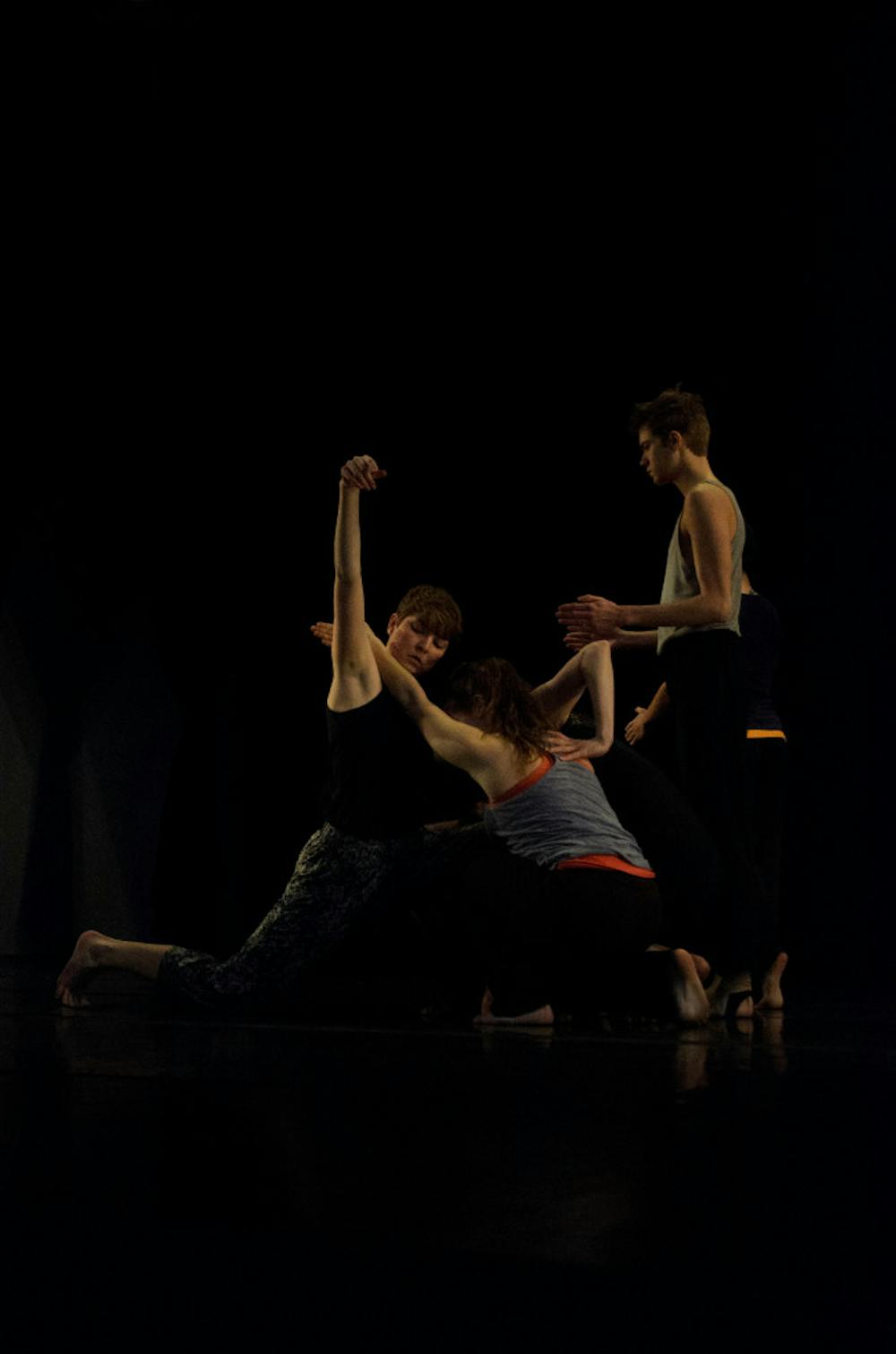On Friday, April 12, the dance department presented their rehearsal of “Dance, Music, Light: Performance Improvisation,” which will take place on May 3 and 4. Penny Campbell, senior lecturer in dance, discussed how dancers, musicians and a stage lighting designer study improvisation. During the lecture, the ensemble demonstrated how exploring improvisation is a daily routine.
The training started with a “warm-up score.” Everyday when the ensemble arrives at the studio from different parts of the campus, they bring themselves from the outer world into the space by merging with each other and investigating deep down into themselves. Each individual artist is autonomous but at the same time collaborative. No theme ran through the movements the dancers did, so collaboration came from listening and listening happens through the eyes, ears and contact.
Towards the end of the warm-up score, however, and a piece emerged as the performers found a sense of coherence. According to Campbell, it is not always easy to find an end. Sometimes musicians will cue the ensemble from sound, sometimes dancers cue from movements or sometimes a safe end comes from a blackout of the lighting.
For the second part of the practice, the ensemble investigated some elements Campbell came up with, such as “a little work with proximity and distance and indicates where you are in the space” and “building chargers with more intensity and energy.”
Dancers call into questions these elements to explore them further and take risks of blowing them. Only several weeks from the actual performance, dancers are less restricted by technique rules as long as they can produce gorgeous work.
All artists are considered equal in the ensemble — dancers, musicians or the lighting designer. The form of practicing improvisation is applicable to any level of artists.
In this open class, intermediate dancers integrate their thinking with their body: they are encouraged to explore movements, shapes and different parts of the body, recognizing that these explorations change habits.
For a while in the class, Campbell introduced the dancers by sticking their arms up. The dancers later abandoned these erect habits, as Campbell encouraged them to evade static work. Artists work to constantly push the envelope, building on each other’s movements and making it into their own.
As a result, the trust between the ensemble strengthened. Everyone in the audience stayed focus even though they are not the ones slated to perform on stage. They internalize their exercises all the while mimicking the movements of the dancers.
Dancers become self-aware at the process and all pieces are completely new for them: the processes become their product.
On performance night, without a theme, the ensemble will have the liberty to compose new pieces based on their experiences of negotiating and interacting. Dancers, musicians and stage lighting designers will be prepared to present the audience their understanding of performance improvisation.
Dancers demonstrate creative processes

Comments



